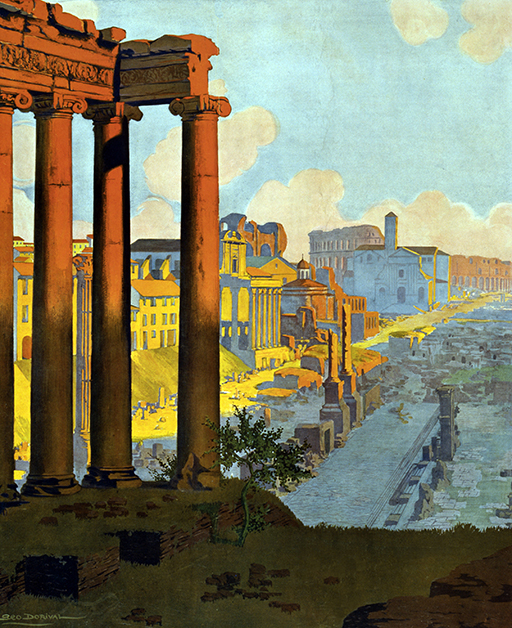4 Postcards from the Grand Tour
This section on Creative Writing was written by Fiona Doloughan
As a practice-based area of study, Creative Writing is primarily concerned with the production of new texts by writers who may come from a wide variety of backgrounds and have different interests and levels of skill. It seeks to provide opportunities for student writers to learn their craft, through creative practice and skills’ development, as well as by reading and reflecting on published writing and work in progress. You have already seen examples from Art History and English Literature of engagement with the Grand Tour, in the form of Grand Tour portraits, and Byron’s verse, penned in response to his visit to Rome in the nineteenth century. For present-day writers and students of Creative Writing, such things might appear less directly relevant. But in this section of the course, you’ll explore how many of the things that fuelled those earlier artistic and literary representations of the Grand Tour can still be relevant from a Creative Writing perspective.

In what follows, you’ll consider what writers actually do (their creative practices or processes, if you will), and observe one example of how a writer might engage with the ideas that lay behind the Grand Tour by connecting their own writing to classical antiquity. There are of course many writers who find a source of inspiration in the literature, archaeology or broader culture of Greek or Roman antiquity, or who journey in their writing to places and cultures from the past. You might have read, for example, The Eagle of the Ninth (1954), by English novelist Rosemary Sutcliff, a story set in Roman Britain in the second century CE; and you may be aware of any number of other historical novelists who take inspiration from antiquity, from the novels set in ancient Rome by writers such as Robert Graves and Robert Harris, to recent fiction that reimagines stories from Greek mythology, by authors such as Kamila Shamsie and Natalie Haynes. It is also the case that many twentieth and twenty-first-century travel writers perform, in effect, their own Grand Tours and incorporate into their work a sense of their own biography as well as a sense of history and place.
Of course, not all writers today are planning to produce a piece of historical fiction or a travel book that engages directly with an ancient place – but we can still see how writers might use ancient objects, paintings or texts as prompts or ‘triggers’ for writing with a view to getting a piece of writing ‘off the ground’. The topic of classical antiquity may also offer a springboard for representing a different kind of reality, something formed in imagination, even if it touches on aspects of the world ‘out there’. The Grand Tour was a cultural phenomenon that was inspired, at least in part, by a desire to encounter the ancient past, and it prompted writers (and artists) to explore different and imaginative ways of recording that encounter. Writing, in general, can be a way of responding to the world and of recording observations, expressing views, exploring connections and creating a dialogue between the writer and the potential or eventual reader.
